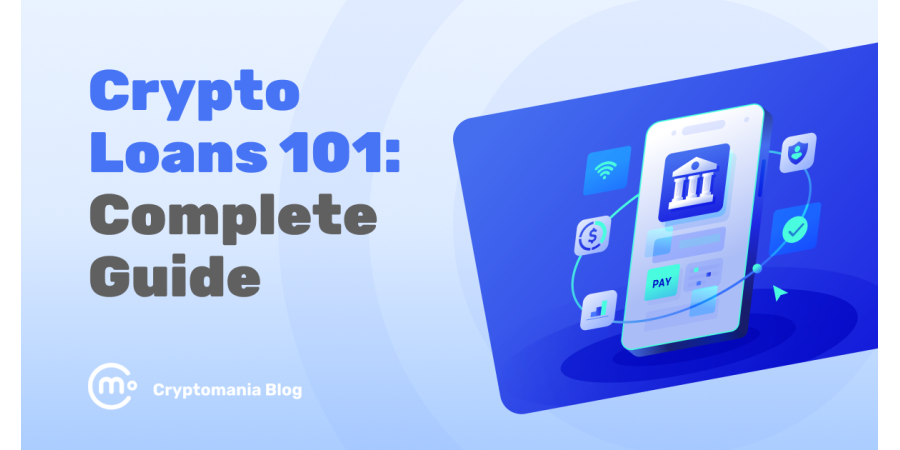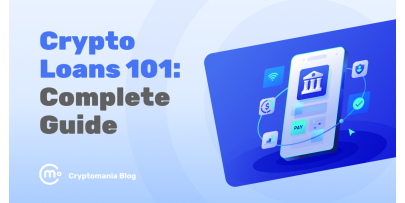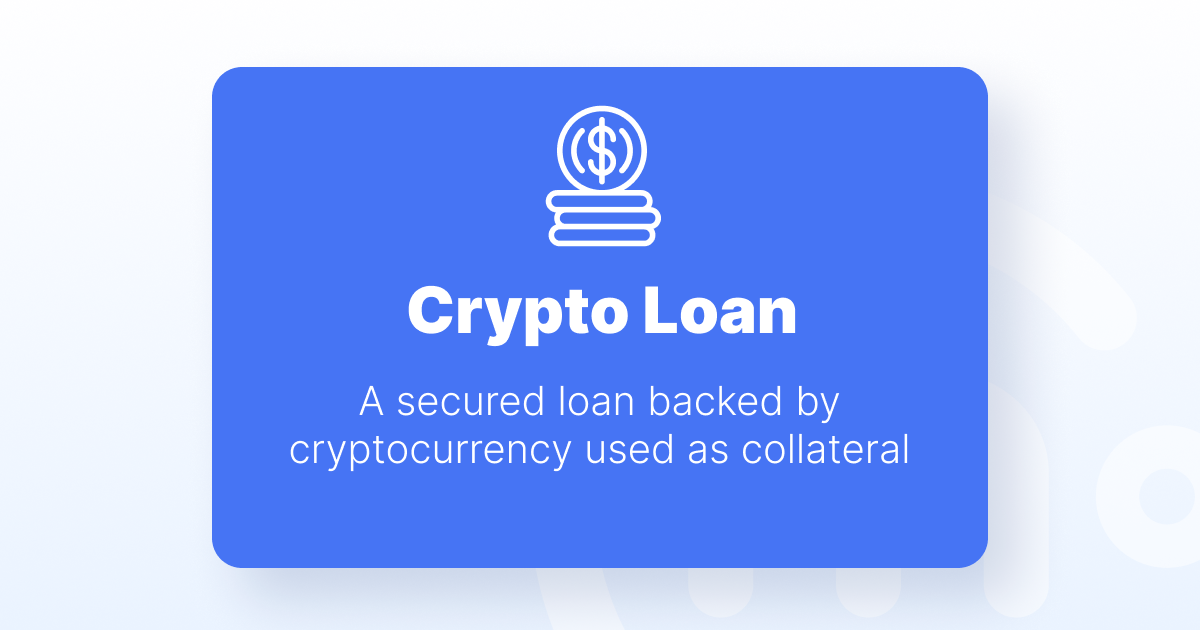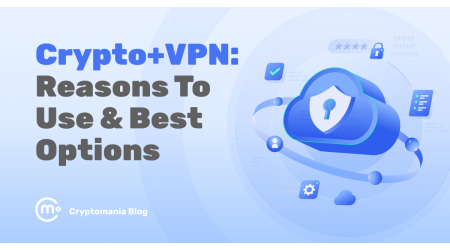

Imagine you’re holding Bitcoin or Ethereum that you believe will keep rising in value. You need cash today. Maybe it’s to cover an expense, start a project, or even buy more crypto. But you don’t want to sell your holdings and lose potential profits. That’s where crypto loans come in handy.
A crypto loan lets you borrow money by using your digital assets as collateral. Instead of going through a bank, credit check, or long approval process, you lock up your crypto and instantly get funds in stablecoins or even fiat.
These loans are available globally, 24/7, and often without the paperwork traditional finance demands.
But with that flexibility comes a trade-off: crypto loans can be risky. Market volatility, liquidation rules, and platform failures have burned many borrowers. You need to understand how these loans work before diving in.
In this guide, we’ll cover:
- How to get a crypto loan step by step
- The difference between crypto loans and traditional loans
- Situations where crypto loans can be useful, and when they’re a bad idea
- The risks you need to watch out for and how to manage them
- Examples of major crypto loan platforms like Aave, Nexo, and others
Let’s get started!
Crypto loans explained
At their core, crypto loans work a lot like secured loans in traditional finance. Instead of pledging your car or home, you put up your cryptocurrency as collateral.

Once it’s locked in, the lender gives you a loan. It’s usually in stablecoins such as USDT or USDC, but sometimes in fiat currencies like USD or EUR.
Here’s the basic flow:
- You deposit crypto (like Bitcoin or Ethereum) into a lending platform.
- The platform determines how much you can borrow based on your collateral. This is expressed as a loan-to-value (LTV) ratio. For example, with a 50% LTV, depositing $10,000 worth of ETH lets you borrow up to $5,000.
- You receive the funds quickly, sometimes within minutes.
- You pay interest over time. Once the loan is repaid, your collateral is released back to you.
Because cryptocurrencies are volatile, lenders require you to over-collateralize. It means you must lock up more value in crypto than the loan amount.
If the value of your collateral falls below a certain threshold, the platform may liquidate (sell) it to cover the loan. That’s the main risk borrowers face.
Centralized VS decentralized platforms
There are two main ways to get a crypto loan:
- Centralized finance (CeFi) platforms – These are companies or exchanges that manage the process for you. You deposit crypto, they hold it, and they disburse your loan. They usually require KYC (identity verification) and can sometimes send loans directly to your bank account. Examples include Nexo, Binance Loans, and Ledn.
- Decentralized finance (DeFi) platforms – These rely on smart contracts instead of a company. You interact directly through a crypto wallet, and the rules are enforced automatically by code. Platforms like Aave or Compound don’t require KYC, but they come with the responsibility of managing everything yourself (gas fees, wallet security, etc.).
Both models have pros and cons. CeFi tends to be more user-friendly and beginner-oriented. DeFi offers greater control and no middleman, but it requires more technical know-how.
A simple example
Let’s say John owns 2 ETH worth $8,000. He doesn’t want to sell because he expects Ethereum’s price to rise, but he needs $2,000 in cash for an expense. He goes to Aave, deposits his ETH as collateral, and borrows $2,000 worth of USDC at around a 40% LTV.
John uses the USDC freely while his ETH stays locked in Aave’s smart contract. If ETH’s price drops too sharply and his LTV climbs too high, John will either need to add more collateral or repay part of the loan to avoid liquidation. Later, once he repays the $2,000 plus interest, his ETH is released back to his wallet.
This example shows why crypto-backed loans can be appealing. You get liquidity without selling your crypto. But you take on the risk of losing it if the market turns against you.
How to get a crypto loan (step by step)
Getting a crypto loan is more straightforward than most people expect.
You don’t need a bank account, a credit check, or weeks of paperwork. What you do need is cryptocurrency to use as collateral and a trustworthy platform to borrow from.
Here’s how the process usually works:
1. Choose your platform
Start by deciding whether you’ll use a centralized platform (CeFi) or a decentralized protocol (DeFi).
- CeFi platforms like Nexo or Binance Loans handle everything for you, including custody of your collateral. They may also offer loans directly in fiat.
- DeFi platforms like Aave or Compound run on smart contracts. You connect a Web3 wallet, deposit collateral, and borrow directly without KYC.
2. Check supported assets and terms
Each platform supports a different set of cryptocurrencies and loan options. Some let you borrow stablecoins, others allow fiat payouts. Compare:
- Loan-to-value (LTV) ratio
- Interest rates (fixed or variable)
- Fees (origination or withdrawal fees)
- Minimum and maximum loan sizes
3. Deposit your collateral
Transfer the crypto you want to use as security. For example, if you’re aiming to borrow $2,000, you might deposit around $4,000–$5,000 worth of Bitcoin or Ethereum, depending on the platform’s requirements.
4. Set your borrowing amount
Choose how much to borrow within the platform’s LTV limit. A safe practice is to borrow well below the maximum allowed. For instance, keeping LTV at 40–50% instead of pushing it to 70%.
5. Receive your loan
Once approved, you get your funds almost instantly. On DeFi, they arrive in your wallet as stablecoins. On CeFi, they may appear in your account, ready to withdraw as fiat or crypto. This speed is what makes an instant crypto loan possible.
6. Manage and monitor your loan
Keep track of your collateral’s value. If the market dips and your LTV rises too high, add more collateral or repay part of the loan to avoid liquidation. Many platforms provide health ratio dashboards or alerts.
7. Repay and unlock your crypto
When you’re ready, repay the principal plus interest. Most platforms let you repay early without penalties. Once the loan is closed, your crypto collateral is released back to you.
What about crypto loans without collateral?
Crypto loans without collateral basically don’t exist. The exception is flash loans on platforms like Aave, which let developers borrow huge sums instantly without collateral. But they must be repaid in the same transaction. For everyday users, collateral is always part of the deal.
Crypto loans VS traditional loans
Crypto loans share the same basic idea as traditional loans. You pledge something of value and borrow against it. But the details (e.g. how they’re approved, managed, and regulated) are very different.
Here’s the comparison between the two.
Approval process
- Traditional loans: Banks and credit unions check your credit history, income, and employment. Approval can take days or weeks, and rejection is common if you don’t meet their standards.
- Crypto loans: No credit checks. As long as you have enough crypto to post as collateral, your loan is approved instantly.
Collateral requirements
- Traditional loans: May be unsecured (like personal loans or credit cards) or secured by assets such as a car or home. Collateral value is usually close to or below the loan amount.
- Crypto loans: Always require collateral. In fact, they’re over-collateralized. You need to lock up 125–150% of the loan’s value in crypto to account for volatility.
Speed and accessibility
- Traditional loans: Applications can be slow, tied to banking hours, and limited by geography.
- Crypto loans: Available globally, 24/7, with funds released within minutes in many cases.
Interest rates and terms
- Traditional loans: Rates are usually stable and lower, especially with collateral like a mortgage. Repayment schedules are clear and protected by consumer laws.
- Crypto loans: Rates vary widely depending on demand, platform, and collateral type. Repayment is flexible, and many platforms allow early repayment without penalties.
Regulation and safety
- Traditional loans: Heavily regulated. Borrowers have legal protections, and deposits are often insured.
- Crypto loans: Operate in a less regulated space. Protections are minimal, and if a lending platform fails, collateral can be lost.
Popular crypto loan platforms
There are dozens of crypto loan sites. But not all are the same terms of reliability, reputation, and features.
Here are some of the better-known names that show the range of what’s available, including both traditional and decentralized finance platforms.
Aave (DeFi)
Aave is one of the most established decentralized lending protocols. Users deposit collateral through a Web3 wallet and can borrow a wide range of cryptocurrencies and stablecoins.
Aave is also famous for introducing flash loans, a special kind of crypto loan without collateral that must be repaid in the same transaction. For most users, an Aave crypto loan typically involves locking up ETH, USDC, or other tokens as collateral and borrowing against them.
Compound (DeFi)
Compound is another major DeFi protocol that uses smart contracts to match borrowers and lenders. Interest rates adjust automatically based on supply and demand, and users keep custody of their assets via their wallets. It’s often seen as a beginner-friendly alternative to Aave.
MakerDAO (DeFi)
MakerDAO allows users to lock collateral (like ETH or staked ETH) in a smart contract vault and mint DAI, a decentralized stablecoin. In practice, this works as a crypto backed loan. Your ETH is locked, and you receive newly issued DAI to use however you want.
Nexo (CeFi)
Nexo is a centralized lender that provides instant loans in both crypto and fiat. Users deposit crypto into their account, and Nexo handles custody. Loans can be withdrawn directly to bank accounts or stablecoins, with no credit checks required.
Binance Loans (CeFi)
As one of the largest exchanges globally, Binance offers crypto lending services alongside its trading features. Users can pledge assets like Bitcoin or Ethereum and borrow stablecoins such as USDT or BUSD. The integration within the Binance ecosystem makes it convenient for active traders.
Other CeFi options
Companies like Ledn, CoinLoan, and Unchained Capital also provide crypto lending, often focusing on Bitcoin-backed loans or niche use cases (such as crypto mortgages). These services tend to be more region-specific. So, depending on where you live, some services may or may not be available to you.
Our note: With centralized platforms, you’re trusting the company to safeguard your assets. Always research their security record, transparency practices, and solvency before depositing. With decentralized protocols, the risk shifts to yourself and the code itself. So check audits and community trust levels.
Risk management and best practices
Crypto loans can be powerful tools, but they come with real risks. The good news is that you can reduce many of those risks with smart planning and discipline.
Here are the most important practices you should be aware of:
Borrow less than you can
Even if a platform allows you to borrow up to 70% of your collateral value, it’s rarely safe to go that high. A sudden dip in the market could push your loan-to-value (LTV) ratio into liquidation territory. Many experienced borrowers stick to 40–50% LTV to leave a buffer.
Keep an eye on your collateral
Crypto markets run 24/7, and prices can change fast. Set up alerts for price drops or monitor your loan dashboard regularly. If your LTV climbs, be ready to add more collateral or repay part of your loan.
Diversify your risk
Avoid putting all your collateral on one platform. If you’re borrowing large amounts, consider spreading your crypto across different crypto loan sites or using a mix of CeFi and DeFi options. That way, one platform failure won’t wipe you out.
Understand the fine print
Every platform has slightly different rules: liquidation thresholds, fees, repayment schedules, and supported assets. Take time to read the terms. For example, some lenders liquidate at 80% LTV, while others may wait until 85%. If you know the exact number, it could save your assets in a downturn.
Prioritize security
- On CeFi platforms, enable two-factor authentication and use strong, unique passwords.
- On DeFi platforms, double-check URLs to avoid phishing sites and use a hardware wallet for added protection.
Security mistakes can cost you your collateral just as quickly as a market crash.
Have a repayment plan
Only borrow what you can realistically pay back. If you’re using a loan to buy crypto, recognize that this is basically leverage. It magnifies gains but also losses. Plan ahead for how you’ll repay if the market doesn’t move in your favor.
Do your homework
Your school teachers were right. Look for platforms with a solid reputation, transparency around reserves, and a track record of withstanding market stress. In crypto lending, reliability matters more than the lowest advertised interest rate.
Pro Tip: Treat a crypto loan with the same caution you would treat a mortgage or car loan. Then, add the awareness that crypto’s volatility makes it even riskier. Borrow conservatively and keep security tight.
The bottom line: Use crypto loans wisely, or not at all
Crypto loans open the door to fast, flexible financing for anyone holding digital assets. They can unlock liquidity without forcing you to sell your Bitcoin or Ethereum, keep you exposed to potential upside, and offer global access without credit checks or lengthy approval processes.
But these advantages come with real risks. Market volatility, liquidation triggers and platform failures can turn a loan into a costly mistake if you’re not prepared. Borrowers who manage their loan-to-value ratios carefully, stick to reputable platforms, and only borrow what they can afford to repay stand the best chance of using crypto loans safely.
Crypto loans are not for everyone. But used wisely, they can be a powerful tool to access cash, reinvest, or cover expenses while holding onto your digital assets. You need to know when a crypto loan makes sense for your situation, and when it’s better to simply sit tight and hold.





